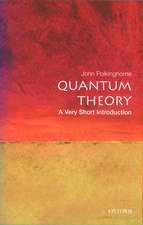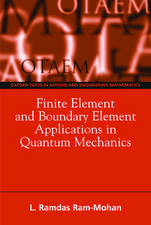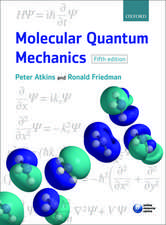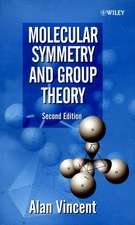Intermolecular Forces and Their Evaluation by Perturbation Theory: Lecture Notes in Chemistry, cartea 25
Autor P. Arrighinien Limba Engleză Paperback – sep 1981
Din seria Lecture Notes in Chemistry
-
 Preț: 96.74 lei
Preț: 96.74 lei - 18%
 Preț: 1123.35 lei
Preț: 1123.35 lei - 18%
 Preț: 776.72 lei
Preț: 776.72 lei - 18%
 Preț: 779.57 lei
Preț: 779.57 lei - 18%
 Preț: 1005.74 lei
Preț: 1005.74 lei - 18%
 Preț: 997.88 lei
Preț: 997.88 lei - 18%
 Preț: 949.55 lei
Preț: 949.55 lei - 18%
 Preț: 1117.03 lei
Preț: 1117.03 lei - 18%
 Preț: 1006.55 lei
Preț: 1006.55 lei - 18%
 Preț: 903.62 lei
Preț: 903.62 lei -
 Preț: 377.73 lei
Preț: 377.73 lei -
 Preț: 395.63 lei
Preț: 395.63 lei - 18%
 Preț: 728.43 lei
Preț: 728.43 lei - 18%
 Preț: 782.57 lei
Preț: 782.57 lei - 18%
 Preț: 1112.78 lei
Preț: 1112.78 lei - 15%
 Preț: 688.13 lei
Preț: 688.13 lei - 15%
 Preț: 646.62 lei
Preț: 646.62 lei -
 Preț: 393.35 lei
Preț: 393.35 lei - 18%
 Preț: 1124.30 lei
Preț: 1124.30 lei -
 Preț: 384.86 lei
Preț: 384.86 lei -
 Preț: 383.71 lei
Preț: 383.71 lei -
 Preț: 378.71 lei
Preț: 378.71 lei -
 Preț: 384.09 lei
Preț: 384.09 lei -
 Preț: 387.42 lei
Preț: 387.42 lei -
 Preț: 388.90 lei
Preț: 388.90 lei -
 Preț: 393.35 lei
Preț: 393.35 lei -
 Preț: 384.09 lei
Preț: 384.09 lei -
 Preț: 377.73 lei
Preț: 377.73 lei -
 Preț: 382.95 lei
Preț: 382.95 lei -
 Preț: 384.70 lei
Preț: 384.70 lei - 15%
 Preț: 644.63 lei
Preț: 644.63 lei -
 Preț: 389.70 lei
Preț: 389.70 lei -
 Preț: 384.09 lei
Preț: 384.09 lei -
 Preț: 385.25 lei
Preț: 385.25 lei -
 Preț: 392.21 lei
Preț: 392.21 lei -
 Preț: 386.00 lei
Preț: 386.00 lei -
 Preț: 403.37 lei
Preț: 403.37 lei -
 Preț: 378.71 lei
Preț: 378.71 lei -
 Preț: 383.50 lei
Preț: 383.50 lei -
 Preț: 390.63 lei
Preț: 390.63 lei -
 Preț: 389.31 lei
Preț: 389.31 lei -
 Preț: 387.96 lei
Preț: 387.96 lei
Preț: 386.00 lei
Nou
Puncte Express: 579
Preț estimativ în valută:
73.88€ • 76.84$ • 61.91£
73.88€ • 76.84$ • 61.91£
Carte tipărită la comandă
Livrare economică 13-27 martie
Preluare comenzi: 021 569.72.76
Specificații
ISBN-13: 9783540108665
ISBN-10: 3540108661
Pagini: 260
Ilustrații: IX, 243 p.
Dimensiuni: 155 x 235 x 14 mm
Greutate: 0.37 kg
Ediția:Softcover reprint of the original 1st ed. 1981
Editura: Springer Berlin, Heidelberg
Colecția Springer
Seria Lecture Notes in Chemistry
Locul publicării:Berlin, Heidelberg, Germany
ISBN-10: 3540108661
Pagini: 260
Ilustrații: IX, 243 p.
Dimensiuni: 155 x 235 x 14 mm
Greutate: 0.37 kg
Ediția:Softcover reprint of the original 1st ed. 1981
Editura: Springer Berlin, Heidelberg
Colecția Springer
Seria Lecture Notes in Chemistry
Locul publicării:Berlin, Heidelberg, Germany
Public țintă
ResearchCuprins
I. Introduction.- II. Symmetry: An Excursion through its Formal Apparatus.- 11.1. Constants of Motion and Projectors.- 11.2. A Review of Group Theory Concepts.- 11.3. A Look to the Symmetric Group.- 11.4. Pauli Principle Implications.- 11.5. Induced and Subduced Representations.- III. Symmetry-Adapted Perturbation Theory: A General Approach.- III.1. Eigenvalue Problems and Partitioning Technique.- III.2. Constants of Motion in the Partitioning Technique.- III.3. Connection between Partitioning Technique and Perturbation Theory.- III.4. The Murrell-Shaw, Musher-Amos and Eisenschitz-London, Hirschfelder-Van der Avoird Formalisms.- III.5. Multidimensional Partitioning Technique and Degenerate Perturbation Theory.- III.6. Upper and Lower Bounds in Second-Order Perturbation Theory by Inner Projection Technique.- IV. Why Symmetry-Adapted Perturbation Theories are Needed?.- IV.1. “Polarization Approximation”: Some Hints to its Possible Inadequacy for Intermolecular Interactions.- IV.2. Is the “Polarization Approximation” a Convergent Perturbative Procedure?.- IV.3. “Polarization Approximation” and its Inadequacy for Evaluating Intermolecular Interactions: Claverie’s Analysis.- V. Symmetry-Adapted Perturbation Theories at Low Orders: From H2+ to the General Case.- V.1. The Interaction H…H+ as a Test for Symmetry—Adapted Perturbation Theories.- V.2. Some Useful Concepts Arising from an Analysis of the Interaction H…,H+.- V.3. A Basic Partition of the Interaction Energy Through the Second-Order for Many-Electron Subsystems.- V.4, Many-Electron Systems: the Problems Posed by Our Ignorance of Exact Unperturbed Eigenstates.- VI. The Calculation of the 1-St Order Interaction Energy.- VI.1. Coulombic Contribution to the 1-st Order Interaction Energy: a UsefulExpression in Terms of the Charge Density Matrix.- VI.2. The Evaluation of the Coulombic Energy.- VI.3. Coulombic Interaction Energy in the Approximation of Neglecting Overlap Effects.- VI.4. An Assessment of the Importance of Charge Overlap Effects.- VI.5. The Exchange Contribution to the 1-st Order Interaction Energy: an Approximate Evaluation.- VI.6. Dependence of the First-Order Energy on the Wave-function Quality.- VII. The Second-order Contribution to the Interaction Energy.- VII.1. Second-order Polarization Energy in the Approximation of Neglecting Charge Overlap Effects.- VII.2. Induction and Dispersion Coefficients for Two Interacting Linear Molecules.- VII.3. Induction Energy Coefficients and Static Polarizabilities of Molecules: Two Problems in One.- VII.4. The Evaluation of the Dispersion Energy Coefficients.- VII.5. Determination of Upper and Lower Bounds to Dispersion Energy Coefficients.- VII.6. Nonexpanded Form of the 2-nd Order Polarization Energy.- VII.7. Approximate Evaluation of Exchange Polarization Effects.- VIII. Epilogue.- *Appendix A.- *Appendix B.- *Appendix C.- *Appendix D.- *References.











